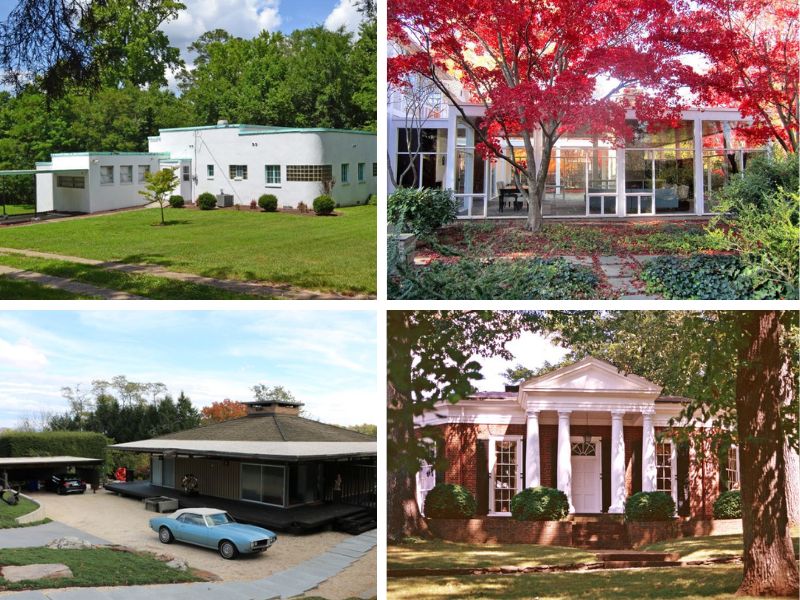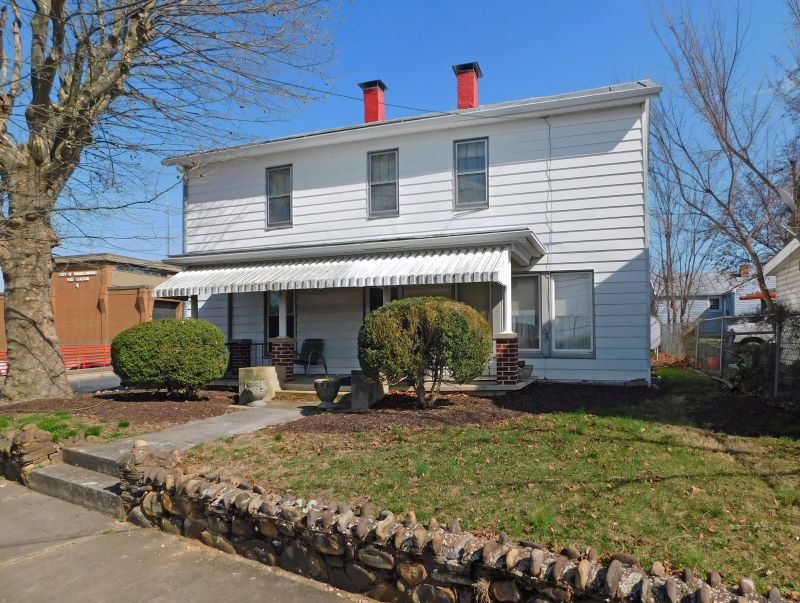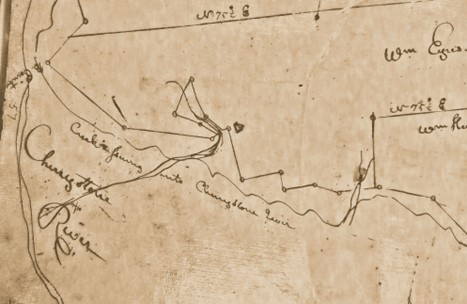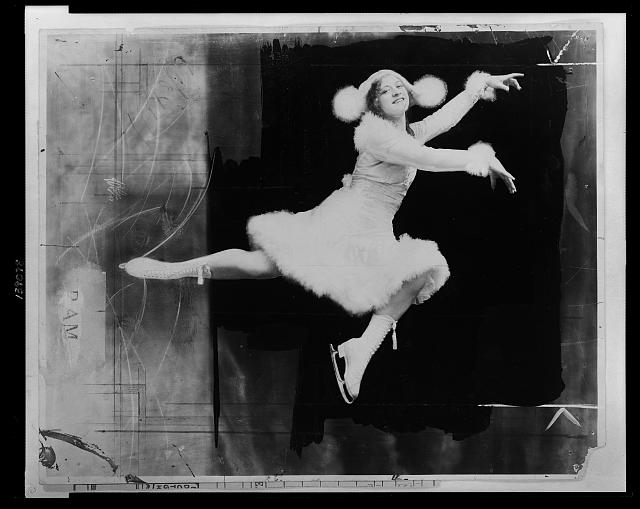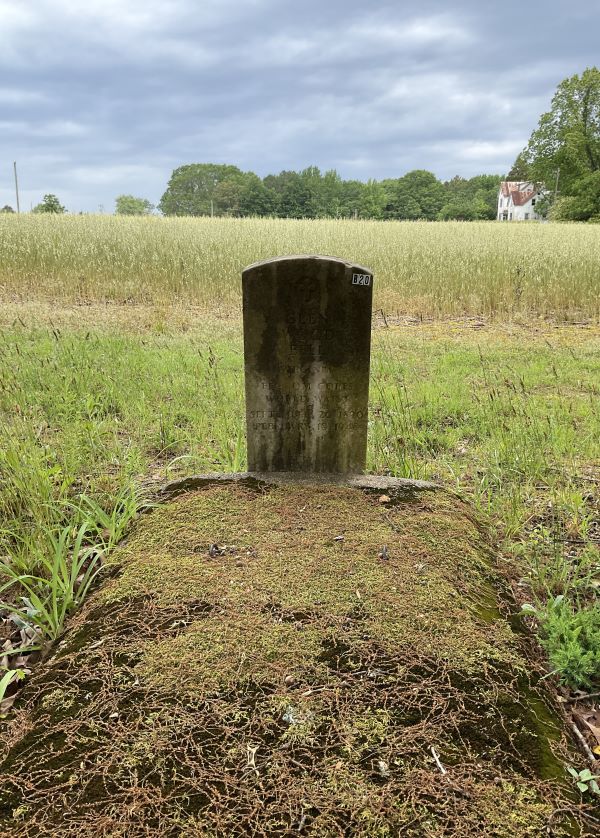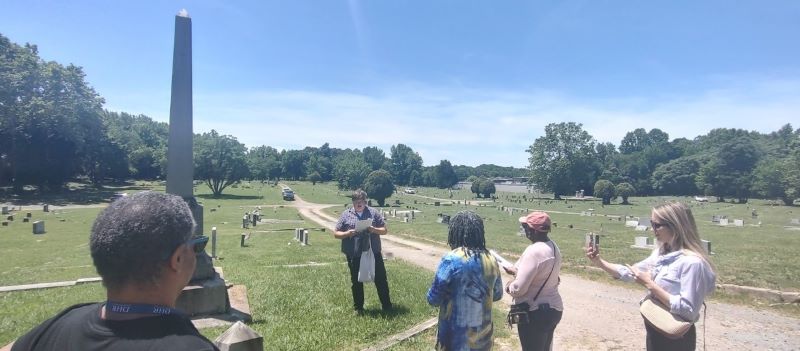Eight New Historical Highway Markers Approved
Topics covered by eight recently approved and forthcoming historical highway markers include the era of James River bateaumen; two Lee County natives who were expert at code-breaking and encryption during World War II and the Cold War; and a Newport News apprentice training school for the shipbuilding trades.
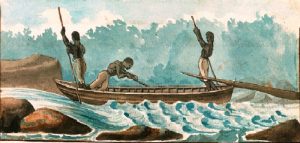
The marker “James River Bateaumen” will rise in Richmond and recollect the era from the 1770s through the mid-1800s when bateaux plied the James River transporting goods between the capital and points west. The era of bateaumen on the river waned after 1840, when the James River and Kanawha Canal was completed to Lynchburg. “Crews of three men, often free or enslaved African Americans, performed the difficult and sometimes dangerous work of poling and steering the long, narrow boats,” the marker will read. Bateaux carrying tobacco, grains, iron ore, coal, and other commodities to Richmond helped to make the city an industrial and commercial hub.
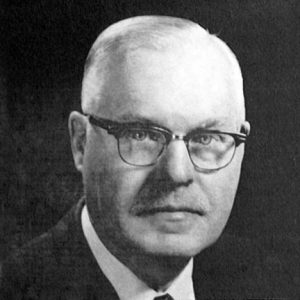
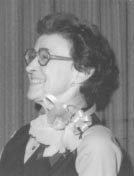
“Lee County Code Breakers” recalls Frank B. Rowlett and Gene Grabeel who grew up in Rose Hill. Rowlett led a U.S. Army Signal Intelligence Service team that in 1940 cracked the Japanese diplomatic cipher machine known as PURPLE. He was also instrumental in designing an American encryption machine that the Axis never decoded during World War II. Gene Gabreel was one of two cryptanalysts whose decades of work, begun in 1943, “painstakingly deciphered encrypted Soviet communications and exposed a network of Soviet spies in the United States,” in the forthcoming marker’s words.
“The Apprentice School” in Newport News relays that the Newport News Shipbuilding and Dry Dock Company, founded in 1886, had an informal apprentice training program in place by the 1890s and established a formal training school in 1919 for shipbuilding trades. One of the nation’s foremost builders of military and commercial ships, the company’s school emphasizes craftsmanship, scholarship, and leadership, and operates today, having graduated more than 10,000 students.
Two markers focus on early Euro-American settlement in Southwest Virginia:
- “Long Hunters”—another marker slated for Lee County—describes hunters who left home for many months at
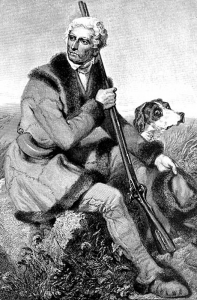
An engraving of "long hunter" Daniel Boone. (Wikimedia) a time to pursue game beyond the limits of early white settlement in western Virginia during the 1700s. Hunting parties, often forming in the Holston River valley, headed west to set up base camps from which they hunted and explored present-day Kentucky and Tennessee. The Cherokee, Shawnee, and other Native Americans violently resisted long hunters’ use of their traditional hunting territory.
- In Pulaski County, “New Dublin Presbyterian Church” recalls that the church’s congregation is one of the oldest in Southwest Virginia, consisting of 45 families by 1769. Revolutionary War officer Col. Joseph Cloyd donated the land for the first sanctuary, built in 1781. In the mid-1800s church members included enslaved African Americans. The church is affiliated with the May 9, 1864, Battle of Cloyd’s Mountain and its cemetery contains the graves of veterans from the Civil War, and World Wars I and II. The present sanctuary, the third on the site, dates to around 1875.
Two markers will highlight African American schools:

- “Washington Rosenwald School” in Rappahannock County was built in 1924 after the Parents’ Civic League, a local African American organization, donated land to the school district. Financial contributions to construct the two-teacher school came from the black community ($1,200), the county ($1,600), and the Julius Rosenwald Fund ($700), which also supplied the building plans.
- “George Washington Carver High School” in Chesterfield County was established in 1948 and consolidated two previous segregated black high schools. The school operated for 22 years as the county’s only public high school for African American students and served as a social hub for the black community. It closed in 1970, when the county finished implementing its desegregation plan.
In Goochland County, “Land Conservation in Virginia” will be the focus of a new marker. In 1966 the General Assembly enacted Virginia’s Open-Space Land Act to promote land conservation. James M. Ball Jr. granted the first open-space easement to the Virginia Outdoors Foundation, a state agency. He then conveyed his ownership of the 104-acre property to the University of Richmond for use as an outdoor classroom and laboratory.
All eight markers were approved by the Virginia Board of Historic Resources, which is authorized to designate new historical markers, at its April 17 quarterly board meeting in Richmond. Typically, it can take upwards of three months or more before new markers are erected and dedicated by their sponsors. The manufacturing cost of each new highway marker is covered by its sponsor.
The Virginia highway marker program, which began in 1927 with installation of the first historical markers along U.S. 1, is considered the oldest such program in the nation. Currently there are more than 2,600 official state markers, most of which are maintained by the Virginia Department of Transportation, except in those localities outside of VDOT’s authority.
More information about the Historical Highway Marker Program is available on the website of the Department of Historic Resources at https://www.dhr.virginia.gov/highway-markers/.
[PLEASE NOTE: DHR markers are erected not to “honor” their subjects but rather to educate and inform the public about a person, place, or event of regional, state, or national importance. In this regard, markers are not memorials.]
Full Text of Markers:
(Please note that some texts may be slightly modified before the manufacture and installation of the signs. Also locations proposed for each sign must be approved in consultation with VDOT or public works in jurisdictions outside VDOT authority.)
George Washington Carver High School
After African American patrons campaigned for a new high school, the Chesterfield County School Board opened the consolidated George Washington Carver High School here in 1948. Carver, which replaced the old Hickory Hill and Daniel Webster Davis High Schools, was for 22 years the county’s only public high school for black students. William A. Brown, Carver’s sole principal, led a dedicated faculty and staff. The building, which also housed offices for school administrators and agricultural and home economics demonstration agents, was a literary and cultural center for the African American community. Carver closed in 1970, when the county finished implementing its desegregation plan.
Sponsor: George Washington Carver Alumni and Friends Association
Locality: Chesterfield County
Proposed Location: near 12400 Branders Bridge Road, Chester, VA
Sponsor Contact: Jane Baskerville, jjbask@verizon.net
James River Bateaumen
The James River bateau, first used in the 1770s, was the primary means of transporting goods up and down the river between Richmond and points west until 1840, when the James River and Kanawha Canal was completed to Lynchburg. Crews of three men, often free or enslaved African Americans, performed the difficult and sometimes dangerous work of poling and steering the long, narrow boats. Largely unsupervised, bateaumen were entrusted with great responsibilities. They carried tobacco, grains, iron ore, coal, and other commodities to Richmond, helping to make the city a hub for industry and commerce. Traffic typically terminated at the Great Basin, built in 1800 1/5 mile northwest of here.
Sponsor: Bateau, LLC
Locality: Richmond
Proposed Location: 301 Virginia Street
Sponsor Contact: Harold L. Watkins, Ph.D., harrylwatkins@netscape.net
Washington Rosenwald School
Washington School was built here ca. 1924 to serve African American students. The Parents’ Civic League, a local organization of African Americans, conveyed the land to the district school board. Contributions for the two-teacher building came from the black community ($1,200), Rappahannock County ($1,600), and the Julius Rosenwald Fund ($700). This fund, established by the president of Sears, Roebuck, and Co., and inspired by the work of Booker T. Washington, helped build more than 5,000 schools for black students between 1917 and 1932. Washington School closed in the mid-1960s, and county schools were desegregated by 1968. The school is listed on the National Register of Historic Places.
Sponsor: William Metcalf
Locality: Rappahannock County
Proposed Location: 267 Piedmont Ave., Washington, VA
Sponsor Contact: William Metcalf, wjmetcalf@netzero.com
Lee County Code Breakers
Frank B. Rowlett (1908-1998) and Gene Grabeel (1920-2015) grew up in Rose Hill, seven miles northeast of here. Rowlett, working in the U.S. Army’s Signal Intelligence Service, led the team that in 1940 cracked the Japanese diplomatic cipher machine known as PURPLE, and he was instrumental in designing the American SIGABA encryption machine, which the Axis never decoded. This work greatly aided the Allied cause in World War II. Grabeel was one of two cryptanalysts who in Feb. 1943 began work on the decades-long VENONA project, which painstakingly deciphered encrypted Soviet communications and exposed a network of Soviet spies in the United States. She retired in 1978.
Sponsor: Lovelady Chapter, Daughters of the American Revolution
Locality: Lee County
Proposed Location: US 58 W. near intersection with Route 684
Sponsor Contact: Virginia Spence, jernvaspence@gmail.com
Long Hunters
Long hunters, so named because they left home for months at a time, pursued game beyond the limits of Euro-American settlement in the 18th century. Hunting parties often formed in the Holston River valley and traveled west before setting up base camps from which hunters dispersed in groups of two or three. In 1761, Elisha Wallen established the first-known base camp here in Powell Valley. Long hunters, including Daniel Boone, explored present-day Kentucky and Tennessee and brought back deer, elk, and bison hides and beaver and otter pelts to sell in eastern markets. Native Americans, primarily Cherokee and Shawnee, violently resisted this use of their traditional hunting territory.
Sponsor: Lovelady Chapter, Daughters of the American Revolution
Locality: Lee County
Proposed Location: US 58 W about three miles from Lee/Scott county line
Sponsor Contact: Virginia Spence, jernvaspence@gmail.com
New Dublin Presbyterian Church
This congregation, one of the oldest in Southwest Virginia, consisted of 45 families by 1769. Col. Joseph Cloyd, a Revolutionary War officer, donated land for its first sanctuary, built 1/2 mile east of here ca. 1781. The present sanctuary (ca. 1875), the third on the site, blends Greek Revival and Gothic Revival architecture. Members in the mid-19th century included enslaved African Americans. The church housed a Confederate military hospital during the Civil War, and the home guard mustered nearby before the Battle of Cloyd’s Mountain on 9 May 1864. The cemetery reflects Victorian funerary art and is the burial place of veterans of the Civil War and World Wars I and II.
Sponsor: Sestercentennial Committee
Locality: Pulaski County
Proposed Location: 5331 New Dublin Road
Sponsor Contact: Gary Millar, monroemillar@gmail.com
The Apprentice School
The Newport News Shipbuilding and Dry Dock Company, founded in 1886, quickly became one of the nation’s foremost builders of military and commercial ships. An informal apprenticeship program for the training of employees was in place by the 1890s. On 1 July 1919, company president Homer L. Ferguson signed Executive Order 24 formally establishing The Apprentice School. The shipyard paid its apprentices to attend academic classes and to receive training in shipbuilding trades, with a focus on craftsmanship, scholarship, and leadership. More than 10,000 students have graduated from the program. This is the fifth building to house The Apprentice School.
Sponsor: The Apprentice School Foundation and The Apprentice Alumni Association
Locality: Newport News
Proposed Location: 3101 Washington Ave.
Sponsor Contact: Bob Drury, r.drury@cox.net
Land Conservation in Virginia
Virginia's Open-Space Land Act, enacted in 1966 to promote land conservation, created the state's open-space easement program. Open-space easements provide permanent protection for land with agricultural, forestal, recreational, ecological, scenic, or historic value for future generations. In June 1968, James M. Ball Jr. granted the first open-space easement to the Virginia Outdoors Foundation, a state agency. Ball then conveyed his ownership of the 104-acre property, including land here on both sides of the road, to the University of Richmond to be used as an outdoor classroom and laboratory.
Sponsor: Ellen Pons
Locality: Goochland County
Proposed Location: 2094 Sheppard Town Road, Crozier
Sponsor Contact: Ellen Pons, ellen@ellenpons.com

